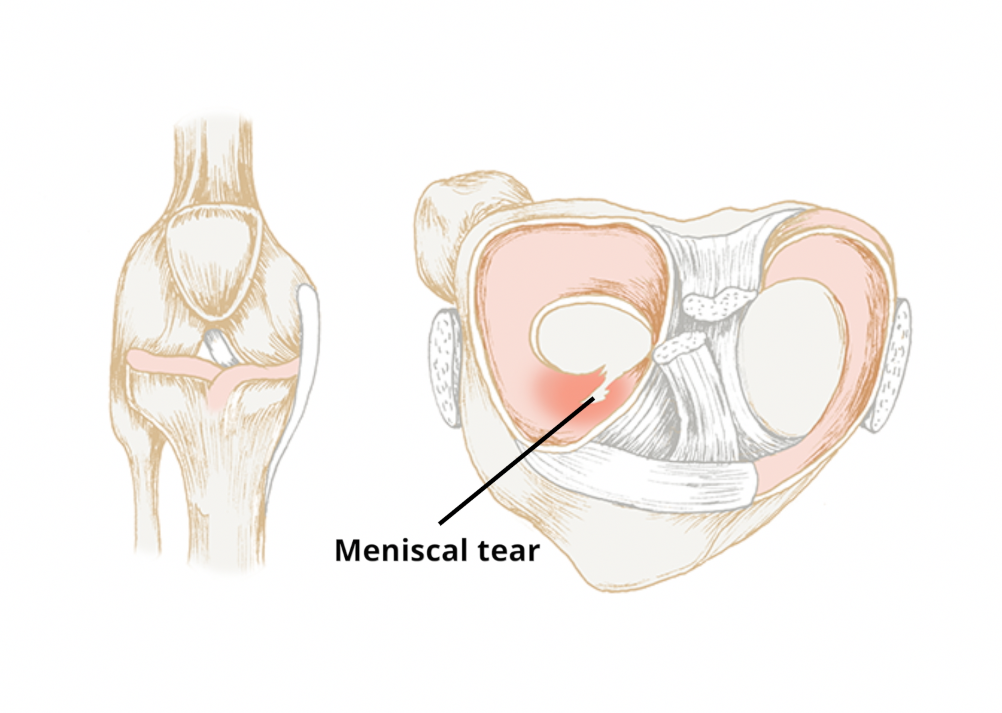 A meniscal injury refers to a tear of the shock absorbing cartilage which lines both sides of the knee joint. The most common symptom is "locking" of the joint.
A meniscal injury refers to a tear of the shock absorbing cartilage which lines both sides of the knee joint. The most common symptom is "locking" of the joint.
Knee meniscal injuries can occur in two ways.
In younger individuals, the menisci can be torn when playing sports requiring rapid changes of direction such as football, rugby or netball.
Middle aged or older individuals may have some areas of degeneration in their menisci. As such the menisci can suffer a tear with more innocuous activities such as when walking or climbing stairs.
The menisci of the knee are two crescent-shaped structures which sit on the knee joint surface of the lower leg bone (tibia). The medial meniscus sits on the inner aspect of the joint and the lateral meniscus sits on the outer aspect of the joint. Both menisci are constructed from strong soft tissue known as fibrocartilage and provide several important functions to the knee including:
- Providing cushioning to reduce forces within the knee joint
- Increasing joint surface area (further reducing relative forces within the knee joint)
- Increasing knee joint stability by moving backwards and forwards with the knee as it is flexed, extended or rotated
How are knee meniscal injuries treated?
Non-surgical management
In the majority of cases, particularly in the older age group, meniscal injuries can be managed effectively by exercises designed to maintain flexibility and strength to the knee joint as described below.
Exercises
Regular exercises to maintain flexibility and strength to the affected knee joint.
Corticosteroid injection therapy
For individuals who have trialled a course of supervised exercises, a corticosteroid injection may occasionally be offered as a treatment, where there are significant age-related changes to the meniscus or knee joint. You can read more about local corticosteroid injections here. Corticosteroid injections are not normally offered for individuals with mechanical symptoms such as locking.
Surgical management
Arthroscopic (keyhole) surgery may be an effective option for patients who:
- Have trialled a course of non-surgical management without success
- Have pain which limits walking distances or a return to normal sporting activities
- Have a satisfactory Body Mass Index (BMI) or have made lifestyle changes to lose excess bodyweight
- Where there are no signs of osteoarthritis of the knee joint
In a few cases where the knee becomes "locked", an urgent arthroscopy will be offered as the first line of treatment.
Please note that there is evidence to indicate that undergoing a knee arthroscopy will increase the risk of requiring a knee replacement in the future. Therefore, a decision on whether to proceed with surgery should only be taken on the basis of current symptoms and limitations.